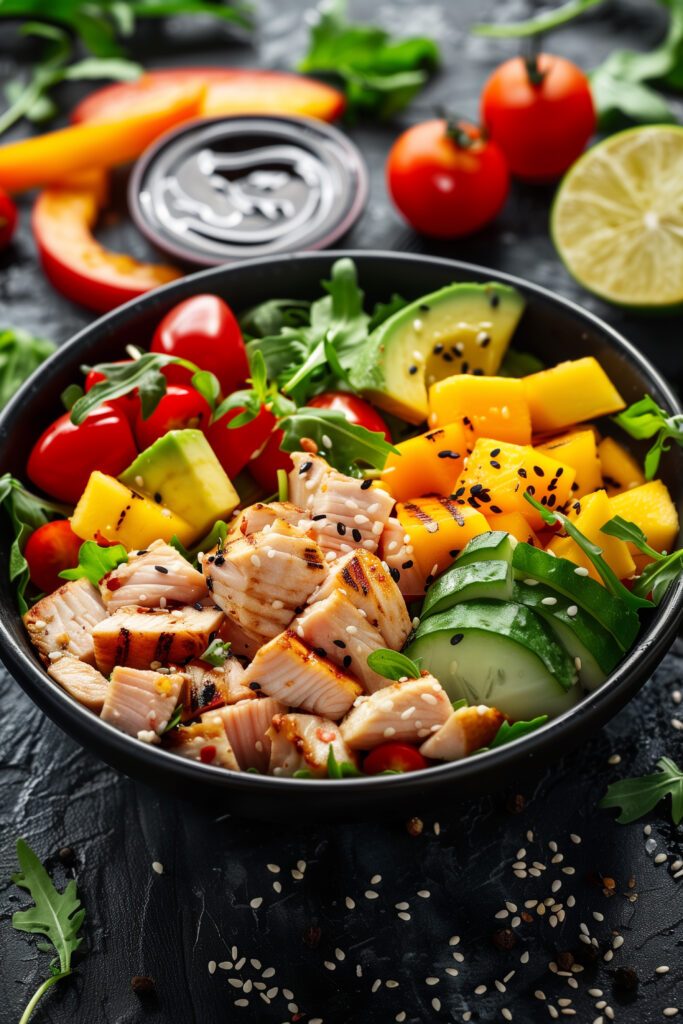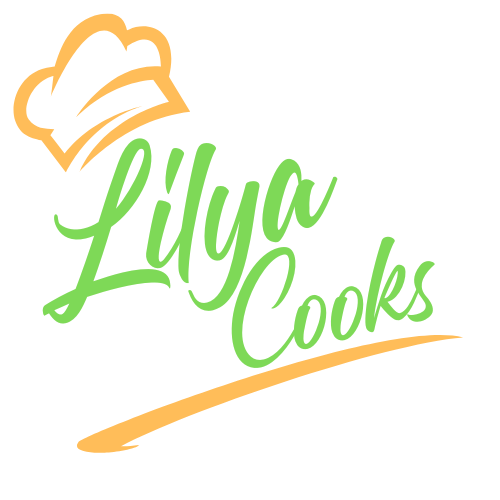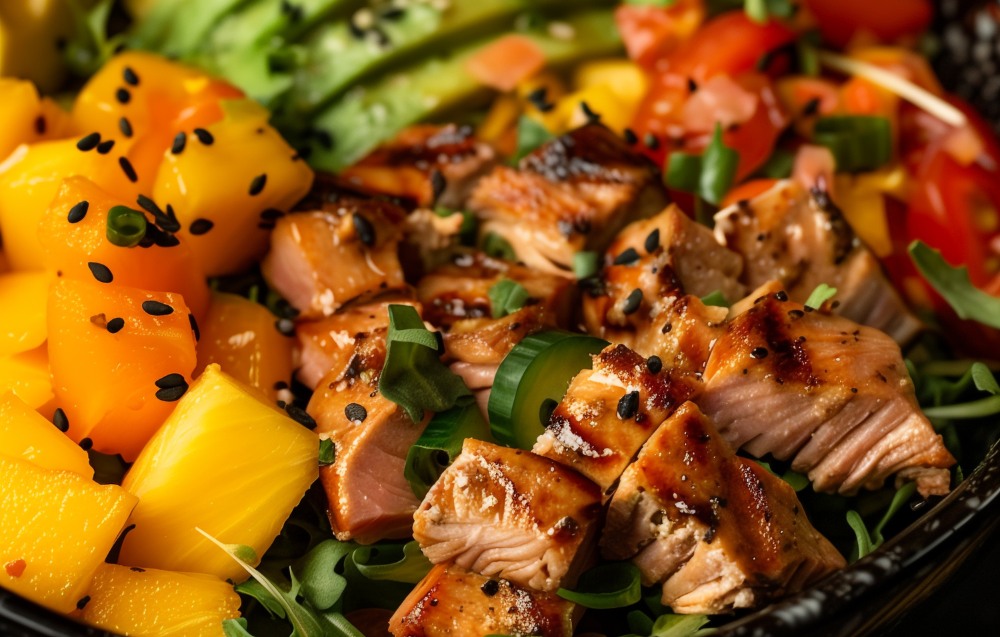If you’ve ever craved a meal that’s healthy, flavorful, and Instagram-worthy, salmon bowls might be your new best friend. They’re not just a trendy dish; they’re a symphony of flavors, textures, and nutrients. Whether you’re a foodie, a busy parent, or a health enthusiast, salmon bowls are versatile enough to meet your needs.
Introduction to Salmon Bowls
Salmon bowls have taken the culinary world by storm. Why? They combine the richness of perfectly cooked salmon with an array of colorful, nutritious ingredients. They’re not only visually stunning but also a powerhouse of health benefits.
What Are Salmon Bowls?
So, what exactly is a salmon bowl? Think of it as a deconstructed sushi roll or a salad with a gourmet twist. At its core, a salmon bowl features cooked or raw salmon served over a bed of grains, greens, or other bases. It’s topped with vibrant vegetables, drizzled with tangy dressings, and often garnished with seeds or nuts for that extra crunch.

It’s like an edible canvas where you can express your creativity. Feeling tropical? Add mango and avocado. Craving something hearty? Go with quinoa and roasted vegetables. The possibilities are endless.
For example, if you’re a fan of salmon dishes, you might enjoy trying this Pink Salmon Recipe, which shares delicious techniques to prepare salmon effortlessly.
Why Are Salmon Bowls Popular?
Ever wonder why salmon bowls are all over social media and on restaurant menus?
- Convenience: They’re easy to prepare, making them perfect for meal prep.
- Health Benefits: Packed with omega-3s, protein, and essential vitamins, salmon bowls are a nutritional goldmine.
- Versatility: You can customize them to fit almost any dietary preference—gluten-free, low-carb, keto, you name it.
In short, salmon bowls check all the boxes: taste, nutrition, and convenience.
If you’re new to cooking salmon, this guide on Frozen Salmon in Air Fryers offers an easy, foolproof method to prepare perfect salmon every time.
Nutritional Benefits of Salmon Bowls
Let’s talk nutrition. Salmon is the star of the show, and for good reason. It’s rich in omega-3 fatty acids, which are excellent for heart and brain health. It’s also high in protein, helping to keep you full and energized.
But that’s not all! The other ingredients in your bowl—like leafy greens, grains, and toppings—bring their own health benefits to the table. Together, they form a balanced, nutrient-packed meal. Eating a salmon bowl is like giving your body a well-rounded multivitamin in the tastiest way possible.
For a comprehensive guide, learn if you can eat salmon sashimi raw
“Food isn’t just fuel; it’s information for your body. A salmon bowl tells your body: ‘Let’s be vibrant, energetic, and healthy today.’”
Choosing the Best Salmon for Your Bowl
Now that we’re sold on the idea of salmon bowls, let’s talk about the hero of the dish: salmon itself. Choosing the right salmon is crucial for flavor, texture, and nutrition.
Fresh vs. Frozen Salmon: Which to Choose?
This debate is as old as time—or at least as old as freezers! Is fresh salmon better than frozen? Not necessarily.
- Fresh Salmon: If you’re buying locally caught salmon, fresh is a fantastic choice. It has a delicate flavor and tender texture. Just be sure to use it quickly—it doesn’t last long.
- Frozen Salmon: Don’t sleep on frozen salmon. Modern freezing methods preserve both flavor and nutrients. It’s a budget-friendly and convenient option, especially for those who don’t live near the coast.
Pro Tip: Always check for a firm texture and a fresh, mild smell. Avoid any salmon that looks dull or smells overly fishy.
Not sure about cooking frozen fish? How Long to Cook Frozen Fish in an Air Fryer provides a clear and easy guide to getting it just right.
Sustainable and Ethical Salmon Options
When buying salmon, consider its environmental impact. Overfishing and unsustainable farming practices can harm marine ecosystems. Opt for sustainably sourced salmon, such as wild-caught Alaskan salmon or responsibly farmed options.
Look for certifications like Marine Stewardship Council (MSC) or Aquaculture Stewardship Council (ASC) on packaging. Supporting sustainable practices is a small choice with a big impact.
Tips for Preparing Salmon for Bowls
Perfectly cooked salmon is the heart of a great salmon bowl. Here are some tips to get it right:
- Season Generously: A simple marinade with soy sauce, garlic, and lemon juice works wonders.
- Don’t Overcook: Salmon should be tender and flaky. Overcooking dries it out, turning a luxurious ingredient into a chewy mess.
- Grill, Bake, or Pan-Sear: Each method brings its own charm. Grilling adds smokiness, baking is foolproof, and pan-searing gives you crispy edges.
“Cooking salmon is like finding the perfect wave—it’s all about timing and finesse.”
Building the Perfect Base for Your Salmon Bowl
Your bowl’s base sets the stage for the magic to happen. It’s not just filler—it’s the foundation of flavors and textures.
Types of Grains: Rice, Quinoa, and Beyond
Rice is the OG base for salmon bowls, but don’t stop there! Expand your horizons with:
- White or Brown Rice: A classic choice that pairs well with almost any topping.
- Quinoa: Packed with protein and naturally gluten-free, it’s a fantastic alternative.
- Farro or Barley: For a nutty, chewy texture, these ancient grains are a winner.
Feeling adventurous? Try a mix of grains for added depth.
Low-Carb Alternatives for Salmon Bowls
Watching your carbs? No problem. Swap grains for low-carb options like:
- Cauliflower Rice: Light, fluffy, and perfect for soaking up flavors.
- Zucchini Noodles: A fun and crunchy alternative.
- Greens: Use spinach, kale, or arugula as your base for a salad-style salmon bowl.
How to Cook the Perfect Base
The secret to a great base? Cook it well and season it right. Here’s how:
- Use broth instead of water for cooking grains—it adds a depth of flavor.
- Season the base lightly with salt, pepper, or a splash of olive oil.
- Let it cool slightly before assembling your bowl to avoid wilting the other ingredients.
“The base is like the stage in a play—set it right, and everything else shines brighter.”
Creative Toppings and Flavor Combinations
Now that you’ve got your base and salmon sorted, it’s time to unleash your creativity with toppings. The toppings are where you can inject personality into your salmon bowl—whether it’s fresh, tangy, spicy, or creamy, the options are endless.
Fresh Vegetables for a Healthy Boost
Vegetables are the soul of a well-rounded salmon bowl. They provide a refreshing crunch and complement the rich, savory flavor of the salmon. Here are some must-try options:
- Cucumber Slices: Crisp and hydrating, cucumbers balance the dish.
- Shredded Carrots: Add a natural sweetness and a vibrant pop of orange.
- Pickled Red Onions: A tangy addition that elevates the entire flavor profile.
- Avocado Slices: Creamy and rich, avocado is a classic pairing with salmon.
For inspiration on creating balanced meals, check out understanding the importance of balanced meals.
Sauces and Dressings That Elevate the Flavor
A great sauce can transform your salmon bowl from ordinary to extraordinary. Here are some popular choices:
- Soy Sauce and Sesame Oil Blend: Simple and savory.
- Spicy Mayo: Mix sriracha with mayonnaise or Greek yogurt for a creamy, spicy kick.
- Lemon-Tahini Dressing: A nutty, citrusy option that’s both light and flavorful.
- Citrus Vinaigrette: Perfect for those who love bright, zesty flavors.
Not sure what flavors to mix and match? Explore creative topping ideas for your bowl for more inspiration.
Incorporating Crunch with Nuts and Seeds
Crunch is king. Adding nuts or seeds not only enhances the texture but also brings a dose of healthy fats and nutrients. Some ideas:
- Toasted Almonds: Delicate and slightly sweet.
- Sesame Seeds: A classic choice for an Asian-inspired bowl.
- Pumpkin Seeds: Perfect for an autumnal vibe.
- Crispy Seaweed: Adds a savory crunch and a hint of umami.
Sprinkle these on top like pixie dust to take your bowl from good to phenomenal.
Common Problems When Making Salmon Bowls
Let’s face it, even the best dishes come with their fair share of challenges. Salmon bowls are no exception. Don’t worry—most issues are easily fixable.
Overcooked or Undercooked Salmon: Solutions
This is a big one. Overcooked salmon turns dry and rubbery, while undercooked salmon might leave you second-guessing your cooking skills. Here’s how to fix it:
- Overcooked Salmon: Try a sauce-heavy bowl. A generous drizzle of teriyaki or tahini dressing can help moisten the salmon and mask the dryness.
- Undercooked Salmon: Pop it back into the pan or oven for a couple of minutes. Keep a close eye on it—salmon cooks quickly!
Pro Tip: Use a meat thermometer. Cook salmon to an internal temperature of 125–135°F (51–57°C) for perfectly cooked fish every time.
Balancing Flavors and Textures
Does your bowl feel flat or one-dimensional? The secret to a great salmon bowl lies in achieving the perfect balance of flavors and textures. Here’s how:
- Add Brightness: A squeeze of lime or lemon can work miracles.
- Introduce Sweetness: Fresh mango or a drizzle of honey pairs beautifully with salmon.
- Boost Crunch: Sprinkle toasted nuts or seeds for extra texture.
For more tips, check out effective meal prep strategies that make healthy eating easy and enjoyable.
Keeping Ingredients Fresh and Crisp
No one likes soggy veggies or limp greens. To keep your salmon bowl fresh:
- Use a salad spinner to dry leafy greens before adding them to your bowl.
- Store prepped veggies and salmon separately if you’re meal-prepping.
- Assemble your bowl just before eating for maximum freshness.
Pro Tip: Add sauces and dressings just before serving to keep everything crisp and vibrant.
Variations of Salmon Bowls to Try
One of the best things about salmon bowls is their versatility. You can tweak the ingredients to match your cravings or experiment with global flavors.
Asian-Inspired Salmon Bowls
For an umami-packed experience, go Asian-inspired. Here’s how:
- Base: Jasmine rice or soba noodles.
- Toppings: Edamame, cucumber, shredded carrots, and pickled ginger.
- Sauce: Soy sauce, sesame oil, and a touch of rice vinegar.
- Garnish: Sesame seeds and nori strips.
This variation is a sushi roll in bowl form—no chopsticks required.
Mediterranean Salmon Bowls
Want something bright and herbaceous? Mediterranean salmon bowls are your go-to:
- Base: Quinoa or farro.
- Toppings: Cherry tomatoes, cucumbers, Kalamata olives, and feta cheese.
- Sauce: A drizzle of lemon-tahini dressing.
- Garnish: Fresh parsley or dill.
It’s like a Greek salad met a salmon filet, and they fell in love.
Spicy and Zesty Salmon Bowls
For those who like a kick of heat, spice things up:
- Base: Cilantro-lime rice.
- Toppings: Avocado, roasted corn, and black beans.
- Sauce: Sriracha-lime crema.
- Garnish: Fresh jalapeños and a squeeze of lime.
This bowl is bold, vibrant, and bursting with flavor.
Health Benefits of Eating Salmon Bowls Regularly
Let’s not forget why salmon bowls are more than just delicious—they’re incredibly good for you.
Omega-3 Fatty Acids and Brain Health
Salmon is one of the best sources of omega-3 fatty acids. These healthy fats improve brain function, reduce inflammation, and support mental well-being. Regularly eating salmon bowls can help you stay sharp and focused.
Supporting Heart Health
The omega-3s in salmon also work wonders for your heart. They lower bad cholesterol levels and reduce the risk of heart disease. Pairing salmon with heart-friendly ingredients like leafy greens and nuts only amplifies these benefits.
Weight Management and Protein Benefits
Trying to shed a few pounds or maintain your current weight? Salmon bowls are a great choice. They’re high in protein, which keeps you full and curbs unnecessary snacking. Plus, the healthy fats in salmon promote satiety, helping you feel satisfied longer.
Meal Prep Tips for Salmon Bowls
Let’s face it—life gets busy. One of the greatest perks of salmon bowls is how easily they can be prepped ahead of time. Whether you’re cooking for a week’s worth of lunches or a quick family dinner, meal prep can save you loads of time and stress.
Storing and Reheating Salmon Bowls Safely
Meal prep is all about convenience, but food safety is key when dealing with salmon. Here are some tips for storing and reheating your bowls:
- Storage Tips:
- Store the salmon separately from the other bowl components. This keeps your veggies crisp and your base fresh.
- Use airtight containers to prevent odors and ensure maximum freshness.
- Reheating Salmon:
- Reheat salmon gently in the oven at 300°F (150°C) for about 10 minutes. Avoid microwaving if possible—it can make the salmon dry and rubbery.
- Alternatively, enjoy your salmon cold for a refreshing twist. It pairs beautifully with crisp veggies and chilled grains.
“Meal prep isn’t just about saving time; it’s about setting your future self up for success. A little effort now equals stress-free meals later.”
Time-Saving Hacks for Busy Schedules
Short on time? These hacks will help you prep your salmon bowls efficiently:
- Batch Cook: Grill or bake multiple salmon fillets at once. They’ll keep for 3–4 days in the fridge.
- Pre-Wash Veggies: Wash and chop your vegetables in advance, then store them in airtight containers.
- Use a Rice Cooker: Cook a big batch of your chosen grain (rice, quinoa, etc.) and portion it out for the week.
Pro Tip: Invest in stackable meal prep containers to keep your ingredients organized and easy to grab.
Scaling Recipes for Families and Meal Prep
If you’re cooking for a crowd or prepping for the week, scaling up your recipe is a breeze. Here’s how:
- Salmon: Plan for about 4–6 ounces (113–170 grams) of salmon per person.
- Grains: One cup of uncooked rice or quinoa is enough for about 3–4 servings.
- Veggies: Use a mix of fresh and roasted vegetables to add variety and ensure there’s plenty to go around.
Remember, salmon bowls are incredibly forgiving. You can adjust quantities and swap ingredients without breaking a sweat.
Frequently Asked Questions About Salmon Bowls
Even the most experienced cooks have questions about salmon bowls. Let’s address some common ones.
Can You Freeze Cooked Salmon Bowls?
Yes, you can freeze cooked salmon, but there are a few things to keep in mind:
- Freeze the salmon and base separately from fresh ingredients like greens or vegetables.
- Wrap the salmon tightly in plastic wrap or foil before placing it in an airtight container.
- Defrost in the fridge overnight, then reheat gently.
Frozen salmon bowls are perfect for those days when you need a quick, nutritious meal with zero effort.
Are Salmon Bowls Keto-Friendly?
Absolutely! With a few tweaks, salmon bowls can easily fit into a keto diet:
- Swap grains for low-carb bases like cauliflower rice or spinach.
- Load up on high-fat toppings like avocado, cheese, and nuts.
- Use keto-friendly dressings like olive oil, tahini, or a creamy avocado-lime sauce.
The result? A delicious, nutrient-packed meal that aligns with your dietary goals.
How Long Does It Take to Make a Salmon Bowl?
If you’re starting from scratch, you can whip up a salmon bowl in about 30–40 minutes. Here’s the breakdown:
- Cooking the Salmon: 10–15 minutes (depending on the method).
- Preparing the Base: 20 minutes for most grains or 5 minutes for quick options like cauliflower rice.
- Chopping Veggies and Assembling: 5–10 minutes.
Meal prep cuts this time significantly. With pre-cooked salmon and a prepped base, you can assemble a bowl in under 10 minutes!
“Quick doesn’t have to mean boring. With a little planning, your salmon bowls can be both fast and fabulous.”
Conclusion: Embrace the Versatility of Salmon Bowls
Salmon bowls aren’t just a meal—they’re an experience. From the flaky, tender salmon to the vibrant toppings and flavorful dressings, every bite is a testament to how delicious healthy eating can be. Whether you’re a seasoned cook or a kitchen novice, these bowls are easy to make, endlessly customizable, and always satisfying.
So why not give them a try? Experiment with different bases, mix and match toppings, and play around with sauces. With salmon bowls, the sky’s the limit. Happy cooking—and eating!

